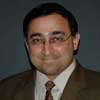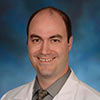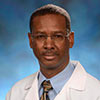 What’s on my mind this month is the countless lives that have been saved and will be saved, thanks to the tireless efforts of biomedical researchers and the extraordinary discoveries they make every day.
What’s on my mind this month is the countless lives that have been saved and will be saved, thanks to the tireless efforts of biomedical researchers and the extraordinary discoveries they make every day.
We have made incredible progress through biomedical research in so many areas. For example, the number of deaths due to cardiovascular disease has declined by 50% because patients receive medical therapies based on results from research studies. Federally-funded research is responsible for hundreds of FDA-approved drugs to treat heart disease, metabolic disease, infectious diseases, and other diseases and conditions. For every $1 spent on research and care for type 2 diabetes, the health benefit is nearly doubled. Finally, the five-year survival rate of people with cancer has increased to over 70% due to discoveries made in cancer research laboratories.
The biomedical research enterprise is the best investment our country can make. The return on this investment accrues directly to the health and wellbeing of our citizens, and to the local and national economies. This is truly a bargain!
However, we are facing a time of fiscal uncertainty regarding our Nation’s support for research, especially for fundamental research. This lack of clarity and conflicting messages that the scientific community has received from the new federal administration has led a number of researchers to hold a March for Science in Washington, DC on April 22, 2017. The organizers have called upon scientists, and all those who support science, from across the United States to stand together to show our legislators and policy makers the critical need for public support for biomedical research.
The mission of the March for Science is to champion and celebrate “robustly funded and publicly communicated science as a pillar of human freedom and prosperity,” as well as an avenue to influence public policy regarding science, science education, diversity in science, and science that benefits the public good. A number of key professional societies have already backed the March for Science, including the American Association for the Advancement of Science (AAAS), Research!America, the Society for Neuroscience, and the National Center for Science Education.
As our Vision 2020 document outlined, challenging times call for innovative leaders to think strategically and opportunistically in order to not only sustain but to thrive in these moments. Indeed, the Accelerating Innovation and Discovery in Medicine (ACCEL-Med) Initiative called upon our entire community to ask the “Big Science” research questions, to collaborate broadly across the academic units, and to work to rapidly translate discoveries made in the laboratory into clinical practice.
This month, we feature the innovative work of our Department of Radiation Oncology, led by Dr. William Regine, the Isadore & Fannie Schneider Foxman Chairman and Professor. The biomedical researchers and physician-scientists in the Department of Radiation Oncology are making selective, strategic and bold choices to drive our work in radiobiology forward. They have integrated research across the continuum of biomedicine, from basic science, to animal work, to preclinical studies, to treatments for people.
In addition, faculty within the Department of Radiation Oncology oversee the Maryland Proton Treatment Center, one of only a handful of such centers in the United States. The Proton Center gives patients in our region access to the most advanced radiation technology and care available, rooted in rigorous scientific research. Our patients’ lives have already been profoundly changed by the treatment and care they’ve received from the Proton Center physicians and staff—and we are only within the first few years of the Center’s opening!
The School of Medicine’s Department of Radiation Oncology is unique in the breadth of medical countermeasure research our faculty and staff are conducting. We are unique because we have an entire division dedicated to translating basic research into preclinical work, and vice versa. Most importantly, we are unique because the people conducting this vital work are all located at the same institution, within walking distance of each other, which makes us very well-positioned to lead the fields of radiation oncology and radiation countermeasures research.
The medical advances that are used to save lives and improve patient health and wellbeing, not only at the Proton Center but across the entire University of Maryland Medical System, depend heavily on the research and discoveries made every day in School of Medicine laboratories. I applaud our entire academic community for its dedication and commitment to human health.
We have been making an indelible impact on science and medicine for the last 210 years—I am supremely confident that we will continue on this extraordinary trajectory for the next 210 years to come!
Sincerely yours,
E. Albert Reece, MD, PhD, MBA
Vice President for Medical Affairs, University of Maryland
John Z. and Akiko K. Bowers Distinguished Professor and
Dean, University of Maryland School of Medicine
We welcome our new faculty and staff!.
Erin O’Connor, MD, joined the Department of Diagnostic Radiology & Nuclear Medicine as an Assistant Professor early this year. Dr. O’Connor received her medical degree from SUNY Health Sciences Center at Syracuse, College of Medicine, completed an internship at the University of Chicago, Department of Internal Medicine, a residency in the Department of Radiology, University of Chicago and a fellowship in Neuroradiology at Northwestern University Medical Center. Prior to joining the department, Dr. O’Connor served on the faculty at the Lewis Katz School of Medicine at Temple University as an Associate Professor of Neuroradiology. Dr. O’Connor is the “Principal Investigator of Brain Structure and Functional Connectivity in HIV Infection,” a Bridge Program Award from the Office of the Vice President for Research Administration (OVPR) at Temple University. At the UMSOM she is establishing the Laboratory of Translational Neuroradiology (LANTERN) to explore the utility of using structural and functional neuroimaging biomarkers to predict disease course and response to therapy in a range of conditions. Specific projects will include: 1) MRI predictors of cognitive decline in treated HIV infection, 2) multimodal neuroimaging biomarkers predicting stroke risk in chronic renal disease, and 3) participation in the multi-site European clinical RESSTORE trial aimed at determining neuroimaging biomarkers predicting response to mesenchymal stem-cell treatment of ischemic stroke. All of these projects will combine the use of advanced multimodal neuroimaging techniques in a personalized medicine framework, ultimately allowing individualized prediction of subsequent clinical course or response to therapy.
Kudos to our colleagues who are experts in their fields and give their all to represent the School of Medicine!
 Curt Civin, MD, Professor, Departments of Pediatrics and Physiology, Director of the Center for Stem Cell Biology and Regenerative Medicine, and Associate Dean for Research; Tami Kingsbury, PhD, Assistant Professor of Physiology, Center for Stem Cell Biology & Regenerative Medicine; and Nancy Hardy, MD, Associate Professor of Medicine, University of Maryland Greenebaum Comprehensive Cancer Center, spoke at and led a CASSS Scientific Society symposium organized by NIST, IBBR and MedImmune entitled “Release Criteria for Hematopoietic Stem Cell Therapies” on February 9 in Rockville, MD.
Curt Civin, MD, Professor, Departments of Pediatrics and Physiology, Director of the Center for Stem Cell Biology and Regenerative Medicine, and Associate Dean for Research; Tami Kingsbury, PhD, Assistant Professor of Physiology, Center for Stem Cell Biology & Regenerative Medicine; and Nancy Hardy, MD, Associate Professor of Medicine, University of Maryland Greenebaum Comprehensive Cancer Center, spoke at and led a CASSS Scientific Society symposium organized by NIST, IBBR and MedImmune entitled “Release Criteria for Hematopoietic Stem Cell Therapies” on February 9 in Rockville, MD.
 Vasken Dilsizian, MD, Professor, Department of Diagnostic Radiology & Nuclear Medicine, presented “Transition From SPECT to PET Myocardial Perfusion Imaging” and “New Approaches of Imaging Myocardial Infection/Inflammation” as a Visiting Professor at the INOVA Fairfax Heart and Vascular Institute, held in Falls Church, VA, February 13–14.
Vasken Dilsizian, MD, Professor, Department of Diagnostic Radiology & Nuclear Medicine, presented “Transition From SPECT to PET Myocardial Perfusion Imaging” and “New Approaches of Imaging Myocardial Infection/Inflammation” as a Visiting Professor at the INOVA Fairfax Heart and Vascular Institute, held in Falls Church, VA, February 13–14.
 Alan Faden, MD, the David S. Brown Professor in Trauma and Director of the Shock, Trauma & Anesthesiology Research (Star) Center, delivered a combined Neurology/Neurosurgery Grand Rounds entitled “Neuroinflammation and Neurodegeneration After Brain or Spinal Cord Injury: New Therapeutic Targets” at Massachusetts General Hospital on March 2.
Alan Faden, MD, the David S. Brown Professor in Trauma and Director of the Shock, Trauma & Anesthesiology Research (Star) Center, delivered a combined Neurology/Neurosurgery Grand Rounds entitled “Neuroinflammation and Neurodegeneration After Brain or Spinal Cord Injury: New Therapeutic Targets” at Massachusetts General Hospital on March 2.
 Anthony Harris, MD, MPH, Professor, Department of Epidemiology & Public Health, participated in a panel discussion on “Infection Prevention Best Practices—Lessons Learned and Gaps” at the fifth Public Meeting of the Presidential Advisory Council on Combating Antibiotic-Resistant Bacteria (PACCARB), held on January 25 in Washington, DC. The meeting was dedicated to presentations from non-federal stakeholders surrounding the topic area of infection prevention and control.
Anthony Harris, MD, MPH, Professor, Department of Epidemiology & Public Health, participated in a panel discussion on “Infection Prevention Best Practices—Lessons Learned and Gaps” at the fifth Public Meeting of the Presidential Advisory Council on Combating Antibiotic-Resistant Bacteria (PACCARB), held on January 25 in Washington, DC. The meeting was dedicated to presentations from non-federal stakeholders surrounding the topic area of infection prevention and control.
 Ronna Hertzano, MD, PhD, Associate Professor, Department of Otorhinolaryngology Head and Neck Surgery, was an invited speaker at the Presidential Symposium “Big Data from Tiny Samples; Using Comprehensive Molecular Profiling to Understand Development” of the 40th MidWinter meeting of the Association for Research in Otolaryngology, February 12–15. Dr. Hertzano presented “A Cell Type-Specific Approach Towards Understanding Hair Cell Development d Survival.” Dr. Hertzano was also the invited speaker for the “inspirational talk” for the travel award recipients at the meeting. Three additional talks were presented by Sunayana Mitra, PhD, Postdoctoral Fellow (“The Impact of Sex on the Response to Noise and Otoprotective Therapies Against Acoustic Injury in Mice”); Yang Song, PhD, Postdoctoral Fellow (“RiboTag-Seq: A Comparative Analysis of Library Prep Approaches for Sequencing Low Input Translatome Samples”); and Joshua Orvis, Bioinformatics Software Engineer, and Dustin Olley from the Institute for Genome Sciences (“The gEAR portal—Sharing and Displaying Gene Expression Now Simplified and Diversified”), which was followed by an on-site demo for the membership.
Ronna Hertzano, MD, PhD, Associate Professor, Department of Otorhinolaryngology Head and Neck Surgery, was an invited speaker at the Presidential Symposium “Big Data from Tiny Samples; Using Comprehensive Molecular Profiling to Understand Development” of the 40th MidWinter meeting of the Association for Research in Otolaryngology, February 12–15. Dr. Hertzano presented “A Cell Type-Specific Approach Towards Understanding Hair Cell Development d Survival.” Dr. Hertzano was also the invited speaker for the “inspirational talk” for the travel award recipients at the meeting. Three additional talks were presented by Sunayana Mitra, PhD, Postdoctoral Fellow (“The Impact of Sex on the Response to Noise and Otoprotective Therapies Against Acoustic Injury in Mice”); Yang Song, PhD, Postdoctoral Fellow (“RiboTag-Seq: A Comparative Analysis of Library Prep Approaches for Sequencing Low Input Translatome Samples”); and Joshua Orvis, Bioinformatics Software Engineer, and Dustin Olley from the Institute for Genome Sciences (“The gEAR portal—Sharing and Displaying Gene Expression Now Simplified and Diversified”), which was followed by an on-site demo for the membership.
 Amal Mattu, MD, Professor, Department of Emergency Medicine, presented the keynote address “Everyday Leadership: Secrets of Great Minds Through the Ages” to the Emergency Medicine Section of the Royal Society of Medicine in London on January 27, during the section’s 30th anniversary celebration.
Amal Mattu, MD, Professor, Department of Emergency Medicine, presented the keynote address “Everyday Leadership: Secrets of Great Minds Through the Ages” to the Emergency Medicine Section of the Royal Society of Medicine in London on January 27, during the section’s 30th anniversary celebration.
 Charles Simone, II, MD, Associate Professor, Department of Radiation Oncology, was among the co-authors on “Prospective Trial of Circulating Tumor Cells as a Biomarker for Early Detection of Recurrence in Patients with Locally Advanced Non-Small Cell Lung Cancer Treated with Chemoradiation,” which he presented at the opening plenary session at the 2017 Multidisciplinary Thoracic Cancers Symposium in San Francisco, CA, and which was featured in a press release from the University of Maryland School of Medicine. Pranshu Mohindra, MD, Assistant Professor, Department of Radiation Oncology, served as an abstract reviewer for the meeting.
Charles Simone, II, MD, Associate Professor, Department of Radiation Oncology, was among the co-authors on “Prospective Trial of Circulating Tumor Cells as a Biomarker for Early Detection of Recurrence in Patients with Locally Advanced Non-Small Cell Lung Cancer Treated with Chemoradiation,” which he presented at the opening plenary session at the 2017 Multidisciplinary Thoracic Cancers Symposium in San Francisco, CA, and which was featured in a press release from the University of Maryland School of Medicine. Pranshu Mohindra, MD, Assistant Professor, Department of Radiation Oncology, served as an abstract reviewer for the meeting.
 The American Association of Physicists in Medicine and the National Cancer Institute premiered a short film at the March 13–17 meeting of the American Physics Society in New Orleans, LA, featuring the Maryland Proton Treatment Center. The film highlights the role of physicists in proton science and includeds interviews with Jerimy Polf, PhD, Associate Pprofessor, Department of Radiation Oncology. The film is available at https://www.dropbox.com/sh/sk5s9jlll9dj56y/AADkQoLzRY9y612NzjDh9tiRa?dl=0.
The American Association of Physicists in Medicine and the National Cancer Institute premiered a short film at the March 13–17 meeting of the American Physics Society in New Orleans, LA, featuring the Maryland Proton Treatment Center. The film highlights the role of physicists in proton science and includeds interviews with Jerimy Polf, PhD, Associate Pprofessor, Department of Radiation Oncology. The film is available at https://www.dropbox.com/sh/sk5s9jlll9dj56y/AADkQoLzRY9y612NzjDh9tiRa?dl=0.
Congratulations to the following who have received honors!
 Mary McKenna, PhD, Professor of Pediatrics, Program in Neuroscience, was honored with a special issue of Neurochemical Research (Special Issue in Honor of Mary C. McKenna—Neurochemistry Research, 2017;42(1):1-319) for her contributions to the understanding of glutamate metabolism in brain and her leadership in the field of brain energy metabolism.
Mary McKenna, PhD, Professor of Pediatrics, Program in Neuroscience, was honored with a special issue of Neurochemical Research (Special Issue in Honor of Mary C. McKenna—Neurochemistry Research, 2017;42(1):1-319) for her contributions to the understanding of glutamate metabolism in brain and her leadership in the field of brain energy metabolism.
 Jason Ramirez, MD, Assistant Professor, Director of the Residency Program, and Director of Inpatient Medicine, Department of Family & Community Medicine, will be honored on May 8 as one of ten recipients of the 2017 New Faculty Scholar Award, presented by the Society of Teachers of Family Medicine.
Jason Ramirez, MD, Assistant Professor, Director of the Residency Program, and Director of Inpatient Medicine, Department of Family & Community Medicine, will be honored on May 8 as one of ten recipients of the 2017 New Faculty Scholar Award, presented by the Society of Teachers of Family Medicine.
 Edward Timothy Souweine, MD, Clinical Assistant Professor, Department of Medicine, received the Samuel P. Asper Award for Excellence in Internal Medicine at the 2017 Maryland Chapter of the American College of Physicians Scientific Meeting in Ellicott City, MD on February 17.
Edward Timothy Souweine, MD, Clinical Assistant Professor, Department of Medicine, received the Samuel P. Asper Award for Excellence in Internal Medicine at the 2017 Maryland Chapter of the American College of Physicians Scientific Meeting in Ellicott City, MD on February 17.
 Members of the Maryland delegation to this year’s annual meeting of the National Association of EMS Physicians, held in New Orleans in late January, received top honors for their poster presentation “Preliminary and Potential Impacts of a Multi-Phase Intervention Utilizing an EMS-Human Services Partnership on Call Volumes Generated by EMS Super-Users.” The poster presented results of a study of call volumes received by the Montgomery County Fire and Rescue Service before and after partnership with the county’s Department of Health and Human Services. By connecting “super-users” with community care resources, the partnership reduced this vulnerable group’s call volume by 64 percent. The study was conducted by members of the fire and rescue service, working in collaboration with Roger Stone, MD, MS, Clinical Assistant Professor and Medical Director, Montgomery County Fire and Rescue Service; Ben Lawner, DO, MS, EMT-P, Adjunct Assistant Professor and Director of Prehospital Services at Allegheny General Hospital; and Jon Mark Hirshon, MD, MPH, PhD, Professor, all from the Department of Emergency Medicine.
Members of the Maryland delegation to this year’s annual meeting of the National Association of EMS Physicians, held in New Orleans in late January, received top honors for their poster presentation “Preliminary and Potential Impacts of a Multi-Phase Intervention Utilizing an EMS-Human Services Partnership on Call Volumes Generated by EMS Super-Users.” The poster presented results of a study of call volumes received by the Montgomery County Fire and Rescue Service before and after partnership with the county’s Department of Health and Human Services. By connecting “super-users” with community care resources, the partnership reduced this vulnerable group’s call volume by 64 percent. The study was conducted by members of the fire and rescue service, working in collaboration with Roger Stone, MD, MS, Clinical Assistant Professor and Medical Director, Montgomery County Fire and Rescue Service; Ben Lawner, DO, MS, EMT-P, Adjunct Assistant Professor and Director of Prehospital Services at Allegheny General Hospital; and Jon Mark Hirshon, MD, MPH, PhD, Professor, all from the Department of Emergency Medicine.
Congratulations to our very productive faculty on their recent grants and contracts!
 Eileen Barry, PhD, Professor of Medicine, Center for Vaccine Development and the Institute for Global Health, received a two-year, $99,993 grant from PATH for “Evaluation and Optimization of Inactivation Methods for Shigella-ETEC Vaccine Strains.”
Eileen Barry, PhD, Professor of Medicine, Center for Vaccine Development and the Institute for Global Health, received a two-year, $99,993 grant from PATH for “Evaluation and Optimization of Inactivation Methods for Shigella-ETEC Vaccine Strains.”
 Daniel Covey, PhD, Postdoctoral Fellow in the laboratory of Joseph Cheer, PhD, Associate Professor, Department of Anatomy & Neurobiology, received a three-year, $183,234, National Research Service Award (NRSA) for “Endocannabinoid Regulation of Dopamine Function and Reinforcement.”
Daniel Covey, PhD, Postdoctoral Fellow in the laboratory of Joseph Cheer, PhD, Associate Professor, Department of Anatomy & Neurobiology, received a three-year, $183,234, National Research Service Award (NRSA) for “Endocannabinoid Regulation of Dopamine Function and Reinforcement.”
 Dheeraj Gandhi, MBBS, Professor, Department of Diagnostic Radiology & Nuclear Medicine, received a $316,426 award from the Focused Ultrasound Foundation in February 2017. This 30-month grant will be used to study the treatment of neuropathic pain. The objectives of this pilot, single arm, prospective trial are to evaluate the safety, feasibility and efficacy of MR Guided Focused Ultrasound-assisted central lateral thalamotomy in the treatment of neuropathic pain. The study explores the hypothesis that patients treated with this technique will have improvement in pain scores and pain-related disability at three months and one year follow-up when compared to their pre-treatment baseline scores. Neuropathic pain has an estimated prevalence of 8 percent of adults and constitutes an important health problem. Direct medical costs related to treatments and physician visits, and indirect cost related to loss of productivity related to neuropathic pain, are staggering. Pharmacotherapy of neuropathic pain is often accompanied by impact on cognition, as well as higher executive functions. Moreover, there is significant potential for side effects and addiction.
Dheeraj Gandhi, MBBS, Professor, Department of Diagnostic Radiology & Nuclear Medicine, received a $316,426 award from the Focused Ultrasound Foundation in February 2017. This 30-month grant will be used to study the treatment of neuropathic pain. The objectives of this pilot, single arm, prospective trial are to evaluate the safety, feasibility and efficacy of MR Guided Focused Ultrasound-assisted central lateral thalamotomy in the treatment of neuropathic pain. The study explores the hypothesis that patients treated with this technique will have improvement in pain scores and pain-related disability at three months and one year follow-up when compared to their pre-treatment baseline scores. Neuropathic pain has an estimated prevalence of 8 percent of adults and constitutes an important health problem. Direct medical costs related to treatments and physician visits, and indirect cost related to loss of productivity related to neuropathic pain, are staggering. Pharmacotherapy of neuropathic pain is often accompanied by impact on cognition, as well as higher executive functions. Moreover, there is significant potential for side effects and addiction.
 Karen Kotloff, MD, Professor of Pediatrics, Center for Vaccine Development and the Institute for Global Health, received a VTEU Task Order (FY2017.A1B1C1D1.0048 - Option D7a) from NIAID for $208,465 over 1.5 years.
Karen Kotloff, MD, Professor of Pediatrics, Center for Vaccine Development and the Institute for Global Health, received a VTEU Task Order (FY2017.A1B1C1D1.0048 - Option D7a) from NIAID for $208,465 over 1.5 years.
Miriam Laufer, MD, Associate Professor of Pediatrics and Director of the Division of Malaria Research, Institute for Global Health, received a two-year, $202,416 R21 award from NIAID for “Impact of Malaria During Pregnancy on Infant Health.”
 Myron Levine, MD, DTPH, the Simon and Bessie Grollman Distinguished Professor of Medicine and Associate Dean for Global Health, Vaccinology and Infectious Diseases, received a four-year, $3,499,799 grant from the Gates Foundation for “Current Prevalence of Chronic Typhoid Carriers and Residual.”
Myron Levine, MD, DTPH, the Simon and Bessie Grollman Distinguished Professor of Medicine and Associate Dean for Global Health, Vaccinology and Infectious Diseases, received a four-year, $3,499,799 grant from the Gates Foundation for “Current Prevalence of Chronic Typhoid Carriers and Residual.”
 Miagritos Tapia, MD, Associate Professor of Pediatrics, Center for Vaccine Development and the Institute for Global Health, received a one-year, $39,056 award from PATH for “Meningitis A Vaccine Sustainability Project.”
Miagritos Tapia, MD, Associate Professor of Pediatrics, Center for Vaccine Development and the Institute for Global Health, received a one-year, $39,056 award from PATH for “Meningitis A Vaccine Sustainability Project.”
 R. Gentry Wilkerson, MD, Assistant Professor, Department of Emergency Medicine, has received a grant in the amount of $342,232 from Pfizer, Inc., to evaluate the efficacy and safety of Rivipansel in the treatment of vaso-occlusive crisis in hospitalized patients with sickle cell disease. Rivipansel is a new drug that reduces cell adhesion and inflammation and therefore could have a variety of clinical applications. Dr. Wilkerson’s multicenter trial will test its ability to improve blood flow in people with sickle cell disease and thus alleviate their pain. In addition, Dr. Wilkerson received a Maryland Industrial Partnerships Program grant in the amount of $100,000 to conduct a clinical study involving a new device for bedside placement of feeding tubes in the procedure called percutaneous ultrasound gastrostomy. With this device, a catheter with a small magnet attached to it is guided by a stronger magnet held outside the body while ultrasound provides visual feedback. This approach aims to be safer, simpler, and less expensive than the current standard, percutaneous endoscopic gastrostomy. The project is also supported by funds from the device’s manufacturer, CoapTech, LLC, the company co-founded by the device inventor, Steven Tropello, MD, Clinical Instructor, Department of Emergency Medicine.
R. Gentry Wilkerson, MD, Assistant Professor, Department of Emergency Medicine, has received a grant in the amount of $342,232 from Pfizer, Inc., to evaluate the efficacy and safety of Rivipansel in the treatment of vaso-occlusive crisis in hospitalized patients with sickle cell disease. Rivipansel is a new drug that reduces cell adhesion and inflammation and therefore could have a variety of clinical applications. Dr. Wilkerson’s multicenter trial will test its ability to improve blood flow in people with sickle cell disease and thus alleviate their pain. In addition, Dr. Wilkerson received a Maryland Industrial Partnerships Program grant in the amount of $100,000 to conduct a clinical study involving a new device for bedside placement of feeding tubes in the procedure called percutaneous ultrasound gastrostomy. With this device, a catheter with a small magnet attached to it is guided by a stronger magnet held outside the body while ultrasound provides visual feedback. This approach aims to be safer, simpler, and less expensive than the current standard, percutaneous endoscopic gastrostomy. The project is also supported by funds from the device’s manufacturer, CoapTech, LLC, the company co-founded by the device inventor, Steven Tropello, MD, Clinical Instructor, Department of Emergency Medicine.
Hats off to those who have been published!
 Clement Adebamowo, BM, ChB, ScD, Professor of Epidemiology & Public Health, Institute of Human Virology, and Associate Director, Population Science Program, Marlene and Stewart Greenebaum Cancer Center, was among the co-authors on “Integrated Genomic and Molecular Characterization of Cervical Cancer” in Nature. 2017 Jan 23 [Epub ahead of print]; and “Serum Metabolomic Profiles Identify ER-Positive Early Breast Cancer Patients at Increased Risk of Disease Recurrence in a Multicenter Population” in Clinical Cancer Research, 2017 Jan 12. [Epub ahead of print].
Clement Adebamowo, BM, ChB, ScD, Professor of Epidemiology & Public Health, Institute of Human Virology, and Associate Director, Population Science Program, Marlene and Stewart Greenebaum Cancer Center, was among the co-authors on “Integrated Genomic and Molecular Characterization of Cervical Cancer” in Nature. 2017 Jan 23 [Epub ahead of print]; and “Serum Metabolomic Profiles Identify ER-Positive Early Breast Cancer Patients at Increased Risk of Disease Recurrence in a Multicenter Population” in Clinical Cancer Research, 2017 Jan 12. [Epub ahead of print].
 James Barrett, BA, Research Fellow; Rebecca Henry, BS, Research Fellow; Bogdan Stoica, MD, Associate Professor; Alok Kumar, PhD, Postdoctoral Fellow; Alan Faden, MD, the David S. Brown Professor in Trauma; and David Loane, PhD, Associate Professor, all from the Department of Anesthesiology and the Shock, Trauma and Anesthesiology Research (STAR) Center, which Dr. Faden directs, were among the co-authors on “NOX2 Deficiency Alters Macrophage Phenotype Through An IL-10/STAT3 Dependent Mechanism: Implications for Traumatic Brain Injury” in Journal of Neuroinflammation, 2017 Mar;14(1):65.
James Barrett, BA, Research Fellow; Rebecca Henry, BS, Research Fellow; Bogdan Stoica, MD, Associate Professor; Alok Kumar, PhD, Postdoctoral Fellow; Alan Faden, MD, the David S. Brown Professor in Trauma; and David Loane, PhD, Associate Professor, all from the Department of Anesthesiology and the Shock, Trauma and Anesthesiology Research (STAR) Center, which Dr. Faden directs, were among the co-authors on “NOX2 Deficiency Alters Macrophage Phenotype Through An IL-10/STAT3 Dependent Mechanism: Implications for Traumatic Brain Injury” in Journal of Neuroinflammation, 2017 Mar;14(1):65.
 Søren Bentzen, PhD, DMSc, Professor, Department of Epidemiology & Public Health; and Pranshu Mohindra, MD, Assistant Professor; Elizabeth Nichols, MD, Assistant Professor; Melissa Vyfhuis, MD, PhD, Resident; and Steven Feigenberg, MD, Professor, all from the Department of Radiation Oncology, were among the co-authors on “Obesity is Associated with Long-Term Improved Survival in Definitively Treated Locally Advanced Non-Small Cell Lung Cancer (NSCLC)” in Lung Cancer, 2017 Feb;104:52–57.
Søren Bentzen, PhD, DMSc, Professor, Department of Epidemiology & Public Health; and Pranshu Mohindra, MD, Assistant Professor; Elizabeth Nichols, MD, Assistant Professor; Melissa Vyfhuis, MD, PhD, Resident; and Steven Feigenberg, MD, Professor, all from the Department of Radiation Oncology, were among the co-authors on “Obesity is Associated with Long-Term Improved Survival in Definitively Treated Locally Advanced Non-Small Cell Lung Cancer (NSCLC)” in Lung Cancer, 2017 Feb;104:52–57.
 Laura Bontempo, MD, Assistant Professor; Danya Khoujah, MBBS, Assistant Professor; and Zachary Dezman, MD, Assistant Professor, all from the Department of Emergency Medicine, with Andrew Crouter, MD, Third-year Emergency Medicine Resident, University of Maryland Medical Center, co-authored “18-Year-Old Female with a Change in Mental Status” in the inaugural issue of Clinical Practice and Cases in Emergency Medicine, 2017 Mar;1:3-8.
Laura Bontempo, MD, Assistant Professor; Danya Khoujah, MBBS, Assistant Professor; and Zachary Dezman, MD, Assistant Professor, all from the Department of Emergency Medicine, with Andrew Crouter, MD, Third-year Emergency Medicine Resident, University of Maryland Medical Center, co-authored “18-Year-Old Female with a Change in Mental Status” in the inaugural issue of Clinical Practice and Cases in Emergency Medicine, 2017 Mar;1:3-8.
 Qi Cao, BM, PhD, Assistant Professor, Department of Diagnostic Radiology & Nuclear Medicine, was among the co-authors on “Diet-Induced Obesity Links to ER Positive Breast Cancer Progression via LPA/PKD-1-CD36 Signaling-Mediated Microvascular Remodeling” in Oncotarget, 2017 Feb 6 [Epub ahead of print].
Qi Cao, BM, PhD, Assistant Professor, Department of Diagnostic Radiology & Nuclear Medicine, was among the co-authors on “Diet-Induced Obesity Links to ER Positive Breast Cancer Progression via LPA/PKD-1-CD36 Signaling-Mediated Microvascular Remodeling” in Oncotarget, 2017 Feb 6 [Epub ahead of print].
 Svetlana Chapoval, MD, PhD, Visiting Assistant Professor of Microbiology & Immunology, Center for Vascular and Inflammatory Diseases and the Greenebaum Comprehensive Cancer Center, was the first and corresponding author on “Semaphorins 4A and 4D in Chronic Inflammatory Diseases” in Inflammation Research, 2017 Feb; 66:111-117. Co-authors included experts on semaphorin research in human chronic diseases from the Technion Faculty of Medicine, Haifa, Israel.
Svetlana Chapoval, MD, PhD, Visiting Assistant Professor of Microbiology & Immunology, Center for Vascular and Inflammatory Diseases and the Greenebaum Comprehensive Cancer Center, was the first and corresponding author on “Semaphorins 4A and 4D in Chronic Inflammatory Diseases” in Inflammation Research, 2017 Feb; 66:111-117. Co-authors included experts on semaphorin research in human chronic diseases from the Technion Faculty of Medicine, Haifa, Israel.
 Sally Cheston, MD, Assistant Professor; Elizabeth Nichols, MD, Assistant Professor; Randi Cohen, MD, Assistant Professor; and Steven Feigenberg, MD, Professor, all from the Department of Radiation Oncology; Søren Bentzen, PhD, DMSc, Professor, Department of Epidemiology & Public Health; Cynthia Drogula, MD, Assistant Professor; Susan Kesmodel, MD, Assistant Professor; Emily Bellavance, MD, Assistant Professor; and Sheri Slezak, MD, Professor, all from the Department of Surgery; and Paula Rosenblatt, MD, Assistant Professor, and Katherine Tkaczuk, MD, Professor, both from the Department of Medicine, were among the co-authors on “Effect of Reduction Mammoplasty on Acute Radiation Side Effects and Use of Lumpectomy Cavity Boosts” in Practical Radiation Oncology, 2017 Jan 7 [Epub ahead of print].
Sally Cheston, MD, Assistant Professor; Elizabeth Nichols, MD, Assistant Professor; Randi Cohen, MD, Assistant Professor; and Steven Feigenberg, MD, Professor, all from the Department of Radiation Oncology; Søren Bentzen, PhD, DMSc, Professor, Department of Epidemiology & Public Health; Cynthia Drogula, MD, Assistant Professor; Susan Kesmodel, MD, Assistant Professor; Emily Bellavance, MD, Assistant Professor; and Sheri Slezak, MD, Professor, all from the Department of Surgery; and Paula Rosenblatt, MD, Assistant Professor, and Katherine Tkaczuk, MD, Professor, both from the Department of Medicine, were among the co-authors on “Effect of Reduction Mammoplasty on Acute Radiation Side Effects and Use of Lumpectomy Cavity Boosts” in Practical Radiation Oncology, 2017 Jan 7 [Epub ahead of print].
 Derik Davis, MD, Assistant Professor, and Ranyah Almardawi, MBBS, MPH, Senior Research Analyst, both from the Department of Diagnostic Radiology & Nuclear Medicine, were among the co-authors on “Practice Quality Improvement for Patient Positioning on Shoulder MRI to Reduce Potential Diagnostic Errors” in Journal of the American College of Radiology, 2017 Feb 17. pii: S1546-1440(16)31381-3 [Epub ahead of print].
Derik Davis, MD, Assistant Professor, and Ranyah Almardawi, MBBS, MPH, Senior Research Analyst, both from the Department of Diagnostic Radiology & Nuclear Medicine, were among the co-authors on “Practice Quality Improvement for Patient Positioning on Shoulder MRI to Reduce Potential Diagnostic Errors” in Journal of the American College of Radiology, 2017 Feb 17. pii: S1546-1440(16)31381-3 [Epub ahead of print].
 Zachary D.W. Dezman, MD, MS, Assistant Professor, Department of Emergency Medicine; Cheng Gao, PhD, Researcher; Hsiao-Chi Li, PhD, Researcher; Shiming Yang, PhD, Assistant Professor; Peter Hu, PhD, Associate Professor; and Colin Mackenzie, MB, ChB, Professor Emeritus, all from the Shock, Trauma and Anesthesiology Research Center and the Department of Anesthesiology, were among the co-authors on “Anomaly Detection Outperforms Logistic Regression in Predicting Trauma Patient Outcomes” in Prehospital Emergency Care, 2017 Mar-Apr;21(2):174-179.
Zachary D.W. Dezman, MD, MS, Assistant Professor, Department of Emergency Medicine; Cheng Gao, PhD, Researcher; Hsiao-Chi Li, PhD, Researcher; Shiming Yang, PhD, Assistant Professor; Peter Hu, PhD, Associate Professor; and Colin Mackenzie, MB, ChB, Professor Emeritus, all from the Shock, Trauma and Anesthesiology Research Center and the Department of Anesthesiology, were among the co-authors on “Anomaly Detection Outperforms Logistic Regression in Predicting Trauma Patient Outcomes” in Prehospital Emergency Care, 2017 Mar-Apr;21(2):174-179.
 Vasken Dilsizian, MD, Professor, Department of Diagnostic Radiology & Nuclear Medicine, was among the co-authors on “Science to Practice: Does FDG Differentiate Morphologically Unstable from Stable Atherosclerotic Plaque?” in Radiology, 2017 Apr;283(1):1-3.
Vasken Dilsizian, MD, Professor, Department of Diagnostic Radiology & Nuclear Medicine, was among the co-authors on “Science to Practice: Does FDG Differentiate Morphologically Unstable from Stable Atherosclerotic Plaque?” in Radiology, 2017 Apr;283(1):1-3.
 Aletta Frazier, MD, Clinical Professor, Department of Diagnostic Radiology & Nuclear Medicine, was the author of “Herpes Simplex Encephalitis” in Radiographics, 2017 Jan-Feb;37(1):198.
Aletta Frazier, MD, Clinical Professor, Department of Diagnostic Radiology & Nuclear Medicine, was the author of “Herpes Simplex Encephalitis” in Radiographics, 2017 Jan-Feb;37(1):198.
P awel Gajer, PhD, Research Associate; Bing Ma, PhD, Research Associate, Department of Microbiology & Immunology; Mike Humphrys, MSc, Lab Research Specialist; and Jacques Ravel, PhD, Professor of Microbiology & Immunology and Associate Director, Genomics, all from the Institute for Genome Sciences, were among the co-authors on “Distinct Effects of the Cervico-Vaginal Microbiota and Herpes Simplex Type 2 Infection on Female Genital Tract Immunology” in Journal for Infectious Diseases, 2017 Feb 13 [Epub ahead of print].
awel Gajer, PhD, Research Associate; Bing Ma, PhD, Research Associate, Department of Microbiology & Immunology; Mike Humphrys, MSc, Lab Research Specialist; and Jacques Ravel, PhD, Professor of Microbiology & Immunology and Associate Director, Genomics, all from the Institute for Genome Sciences, were among the co-authors on “Distinct Effects of the Cervico-Vaginal Microbiota and Herpes Simplex Type 2 Infection on Female Genital Tract Immunology” in Journal for Infectious Diseases, 2017 Feb 13 [Epub ahead of print].
 Dheeraj Gandhi, MBBS, Professor, Department of Diagnostic Radiology & Nuclear Medicine, was among the co-authors on “Thrombolytic Removal of Intraventricular Haemorrhage in Treatment of Severe Stroke: Results of the Randomised, Multicentre, Multiregion, Placebo-Controlled CLEAR III Trial” in Lancet, 2017 Feb 11;389(10069):603-611.
Dheeraj Gandhi, MBBS, Professor, Department of Diagnostic Radiology & Nuclear Medicine, was among the co-authors on “Thrombolytic Removal of Intraventricular Haemorrhage in Treatment of Severe Stroke: Results of the Randomised, Multicentre, Multiregion, Placebo-Controlled CLEAR III Trial” in Lancet, 2017 Feb 11;389(10069):603-611.
 Ann Gruber-Baldini, PhD, Professor (first author); Denise Orwig, PhD, Associate Professor; and Jay Magaziner, PhD, MSHyg, Professor and Chair (last author), all from the Department of Epidemiology & Public Health; Lynn Grattan, PhD, Associate Professor, Department of Neurology; and Marc Hochberg, MD, MPH, Professor, Department of Medicine, were among the co-authors on “Differences Between Men and Women who Fracture their Hip and Impact on Six-Month Survival” in Journal of the American Geriatrics Society, 2017 Feb 8 [Epub ahead of print]. Dr. Gruber-Baldini and Erik Barr, BA, Data Analyst, also from the Department of Epidemiology & Public Health, and Friedrich Ranier von Coelln, DrMed, Assistant Professor; Stephen Reich, MD, Professor; and Lisa Shulman, MD, Professor (last author), all from the Department of Neurology, were among the co-authors on “Response Shift—The Experience of Disease Progression in Parkinson Disease” in Parkinsonism & Related Disorders, 2017 Mar;36:52-56.
Ann Gruber-Baldini, PhD, Professor (first author); Denise Orwig, PhD, Associate Professor; and Jay Magaziner, PhD, MSHyg, Professor and Chair (last author), all from the Department of Epidemiology & Public Health; Lynn Grattan, PhD, Associate Professor, Department of Neurology; and Marc Hochberg, MD, MPH, Professor, Department of Medicine, were among the co-authors on “Differences Between Men and Women who Fracture their Hip and Impact on Six-Month Survival” in Journal of the American Geriatrics Society, 2017 Feb 8 [Epub ahead of print]. Dr. Gruber-Baldini and Erik Barr, BA, Data Analyst, also from the Department of Epidemiology & Public Health, and Friedrich Ranier von Coelln, DrMed, Assistant Professor; Stephen Reich, MD, Professor; and Lisa Shulman, MD, Professor (last author), all from the Department of Neurology, were among the co-authors on “Response Shift—The Experience of Disease Progression in Parkinson Disease” in Parkinsonism & Related Disorders, 2017 Mar;36:52-56.
 Jack Guralnik, MD, PhD, MPH, Professor, Department of Epidemiology & Public Health, was among the co-authors on “Fear of Falling and Its Association with Life-space Mobility of Older Adults: A Cross-sectional Analysis Using Data from Five International Sites” in Age and Ageing, 2017 Jan 1 [Epub ahead of print].
Jack Guralnik, MD, PhD, MPH, Professor, Department of Epidemiology & Public Health, was among the co-authors on “Fear of Falling and Its Association with Life-space Mobility of Older Adults: A Cross-sectional Analysis Using Data from Five International Sites” in Age and Ageing, 2017 Jan 1 [Epub ahead of print].
 Stephanie Kahntroff, MD, Assistant Professor, Department of Anesthesiology, was among the co-authors on “Perioperative Hypothermia in Neonatal Intensive Care Unit Patients: Effectiveness of a Thermoregulation Intervention and Associated Risk Factors” in Pediatric Anesthesia, 2017 Feb;27(2):196-204.
Stephanie Kahntroff, MD, Assistant Professor, Department of Anesthesiology, was among the co-authors on “Perioperative Hypothermia in Neonatal Intensive Care Unit Patients: Effectiveness of a Thermoregulation Intervention and Associated Risk Factors” in Pediatric Anesthesia, 2017 Feb;27(2):196-204.
 Seth Kligerman, MD, Assistant Professor; Jean Jeudy, MD, Associate Professor; and Charles White, MD, Professor, all from the Department of Diagnostic Radiology & Nuclear Medicine, were among the co-authors on “Use of Model-Based Iterative Reconstruction to Improve Detection of Congenital Cardiovascular Anomalies in Infants Undergoing Free-Breathing Computed Tomographic Angiography” in Journal of Thoracic Imaging, 2017 Mar;32(2):127-135.
Seth Kligerman, MD, Assistant Professor; Jean Jeudy, MD, Associate Professor; and Charles White, MD, Professor, all from the Department of Diagnostic Radiology & Nuclear Medicine, were among the co-authors on “Use of Model-Based Iterative Reconstruction to Improve Detection of Congenital Cardiovascular Anomalies in Infants Undergoing Free-Breathing Computed Tomographic Angiography” in Journal of Thoracic Imaging, 2017 Mar;32(2):127-135.
 Karen Kotloff, MD, Professor of Pediatrics, and James Campbell MD, MS, Professor of Pediatrics, both from the Center for Vaccine Development and Institute for Global Health, were among the co-authors on “Safety and Immunogenicity of a Modified Vaccinia Ankara Vaccine Using Three Immunization Schedules and Two Modes of Delivery: A Randomized Clinical Non-Inferiority Trial” in Vaccine, 2017 Mar 23;35(13):1675-1682.
Karen Kotloff, MD, Professor of Pediatrics, and James Campbell MD, MS, Professor of Pediatrics, both from the Center for Vaccine Development and Institute for Global Health, were among the co-authors on “Safety and Immunogenicity of a Modified Vaccinia Ankara Vaccine Using Three Immunization Schedules and Two Modes of Delivery: A Randomized Clinical Non-Inferiority Trial” in Vaccine, 2017 Mar 23;35(13):1675-1682.
 Alok Kumar, PhD, Postdoctoral Fellow; Bogdan Stoica, MD, Associate Professor; David Loane, PhD, Associate Professor; Gelareh Abulwerdi, Graduate Student; Niaz Khan, MS II, Medical Scientist Training Program; Asit Kumar, PhD, Postdoctoral Fellow; and Alan Faden, MD, the David S. Brown Professor in Trauma, all from the Department of Anesthesiology and the Shock, Trauma and Anesthesiology Research (STAR) Center, which Dr. Faden directs, in collaboration with Ming Yang, MD, Research Associate, and Stephen Thom, MD, PhD, Professor, both from the Department of Emergency Medicine, were among the co-authors on “Microglia-Derived Microparticles Mediate Neuroinflammation After Traumatic Brain Injury” in Journal of Neuroinflammation, 2017 Mar;14:47.
Alok Kumar, PhD, Postdoctoral Fellow; Bogdan Stoica, MD, Associate Professor; David Loane, PhD, Associate Professor; Gelareh Abulwerdi, Graduate Student; Niaz Khan, MS II, Medical Scientist Training Program; Asit Kumar, PhD, Postdoctoral Fellow; and Alan Faden, MD, the David S. Brown Professor in Trauma, all from the Department of Anesthesiology and the Shock, Trauma and Anesthesiology Research (STAR) Center, which Dr. Faden directs, in collaboration with Ming Yang, MD, Research Associate, and Stephen Thom, MD, PhD, Professor, both from the Department of Emergency Medicine, were among the co-authors on “Microglia-Derived Microparticles Mediate Neuroinflammation After Traumatic Brain Injury” in Journal of Neuroinflammation, 2017 Mar;14:47.
 Elizabeth Lamos, MD (first author), Assistant Professor, and Kristi Silver, MD (last author), Associate Professor, both from the Department of Medicine, and Laurence Magder, PhD, Professor, Department of Epidemiology & Public Health, were among the co-authors on “Role of Glycemic Control on Hospital-Related Outcomes in Patients With Diabetes Mellitus Undergoing Renal Transplantation” in Diabetes, Metabolic Syndrome and Obesity, 2017 Jan 5;10:13-17.
Elizabeth Lamos, MD (first author), Assistant Professor, and Kristi Silver, MD (last author), Associate Professor, both from the Department of Medicine, and Laurence Magder, PhD, Professor, Department of Epidemiology & Public Health, were among the co-authors on “Role of Glycemic Control on Hospital-Related Outcomes in Patients With Diabetes Mellitus Undergoing Renal Transplantation” in Diabetes, Metabolic Syndrome and Obesity, 2017 Jan 5;10:13-17.
 Matthew Laurens, MD, MPH, Associate Professor of Pediatrics; Kirsten Lyke, MD, Associate Professor of Medicine; William Blackwelder, PhD, Professor of Medicine; and Christopher Plowe, MD, MPH, the Frank M. Calia, MD Professor of Medicine and Founding Director, all from the Institute for Global Health, were among the co-authors on “Strain-Specific Plasmodium falciparum Growth Inhibition Among Malian Children Immunized with a Blood-Stage Malaria Vaccine”in PLoS One, 2017 Mar 10;12(3):e0173294 [eCollection 2017].
Matthew Laurens, MD, MPH, Associate Professor of Pediatrics; Kirsten Lyke, MD, Associate Professor of Medicine; William Blackwelder, PhD, Professor of Medicine; and Christopher Plowe, MD, MPH, the Frank M. Calia, MD Professor of Medicine and Founding Director, all from the Institute for Global Health, were among the co-authors on “Strain-Specific Plasmodium falciparum Growth Inhibition Among Malian Children Immunized with a Blood-Stage Malaria Vaccine”in PLoS One, 2017 Mar 10;12(3):e0173294 [eCollection 2017].
 Yuanyuan Liang, PhD, MSc, Interim Visiting Assistant Professor, Department of Epidemiology & Public Health, was among the co-authors on “Gaps in the Public’s Knowledge About Chronic Pain: Representative Sample of Hispanic Residents from Five States” in The Journal of Pain, 2017 Jan 12 [Epub ahead of print].
Yuanyuan Liang, PhD, MSc, Interim Visiting Assistant Professor, Department of Epidemiology & Public Health, was among the co-authors on “Gaps in the Public’s Knowledge About Chronic Pain: Representative Sample of Hispanic Residents from Five States” in The Journal of Pain, 2017 Jan 12 [Epub ahead of print].
 Thomas MacVittie, PhD, Professor; Ann Farese, MS, MT, Assistant Professor; Alex Bennett, Research Lead Specialist; and Karl Prado, PhD, Professor, all from the Department of Radiation Oncology, were among the co-authors on “AEOL 10150 Mitigates Radiation-Induced Lung Injury in the Nonhuman Primate: Morbidity and Mortality are Administration Schedule-Dependent” in Radiation Research, 2017 Feb 10 [Epub ahead of print].
Thomas MacVittie, PhD, Professor; Ann Farese, MS, MT, Assistant Professor; Alex Bennett, Research Lead Specialist; and Karl Prado, PhD, Professor, all from the Department of Radiation Oncology, were among the co-authors on “AEOL 10150 Mitigates Radiation-Induced Lung Injury in the Nonhuman Primate: Morbidity and Mortality are Administration Schedule-Dependent” in Radiation Research, 2017 Feb 10 [Epub ahead of print].
 Maggie Matern, BSc, Graduate Student (first author); Beatrice Milon, PhD, Research Supervisor; Xiaoyu Zhang, PhD, Assistant Professor; and Ronna Hertzano, MD, PhD, Associate Professor, all from the Department of Otorhinolaryngology Head and Neck Surgery, and Yang Song, PhD, Bioinformatician, Institute for Genome Sciences, were among the co-authors on “Gfi1Cre Mice Have Early Onset Progressive Hearing Loss and Induce Recombination in Numerous Inner Ear Non-Hair Cells” in Scientific Reports, 2017 Feb 9;7:42079.
Maggie Matern, BSc, Graduate Student (first author); Beatrice Milon, PhD, Research Supervisor; Xiaoyu Zhang, PhD, Assistant Professor; and Ronna Hertzano, MD, PhD, Associate Professor, all from the Department of Otorhinolaryngology Head and Neck Surgery, and Yang Song, PhD, Bioinformatician, Institute for Genome Sciences, were among the co-authors on “Gfi1Cre Mice Have Early Onset Progressive Hearing Loss and Induce Recombination in Numerous Inner Ear Non-Hair Cells” in Scientific Reports, 2017 Feb 9;7:42079.
 Monica McArthur, MD, PhD, Assistant Professor (first author), and Marcelo Sztein, MD, Professor (last author), both from the Department of Pediatrics; Wilbur Chen, MD, MS, Associate Professor of Medicine, and Myron Levine, MD, DTPH, the Simon and Bessie Grollman Distinguished Professor and Associate Dean For Global Health, Vaccinology and Infectious Diseases, both from the Institute for Global Health; and Laurence Magder, PhD, Professor, Department of Epidemiology & Public Health, were the co-authors of “Impact of CD4+ T Cell Responses on Clinical Outcome following Oral Administration of Wild-Type Enterotoxigenic Escherichia coli in Humans” in PLoS Neglected Tropical Diseases, 2017 Jan 19;11(1):e0005291.
Monica McArthur, MD, PhD, Assistant Professor (first author), and Marcelo Sztein, MD, Professor (last author), both from the Department of Pediatrics; Wilbur Chen, MD, MS, Associate Professor of Medicine, and Myron Levine, MD, DTPH, the Simon and Bessie Grollman Distinguished Professor and Associate Dean For Global Health, Vaccinology and Infectious Diseases, both from the Institute for Global Health; and Laurence Magder, PhD, Professor, Department of Epidemiology & Public Health, were the co-authors of “Impact of CD4+ T Cell Responses on Clinical Outcome following Oral Administration of Wild-Type Enterotoxigenic Escherichia coli in Humans” in PLoS Neglected Tropical Diseases, 2017 Jan 19;11(1):e0005291.
 Mark Mishra, MD, Assistant Professor (first author); Nancy Knight, PhD, Associate Professor; Minesh Mehta, MB, ChB, FASTRO, Adjunct Professor; and William Regine, MD, FACR, FACRO, the Isadore & Fannie Schneider Foxman Chair and Professor (last author), all from the Department of Radiation Oncology; and Soren Bentzen, PhD, DMSc, Professor, Department of Epidemiology & Public Health, were among the co-authors on “Establishing Evidence-Based Indications for Proton Therapy: An Overview of Current Clinical Trials” in International Journal of Radiation Oncology, Biology, Physics, 2017 Feb 1;97(2):228-235.
Mark Mishra, MD, Assistant Professor (first author); Nancy Knight, PhD, Associate Professor; Minesh Mehta, MB, ChB, FASTRO, Adjunct Professor; and William Regine, MD, FACR, FACRO, the Isadore & Fannie Schneider Foxman Chair and Professor (last author), all from the Department of Radiation Oncology; and Soren Bentzen, PhD, DMSc, Professor, Department of Epidemiology & Public Health, were among the co-authors on “Establishing Evidence-Based Indications for Proton Therapy: An Overview of Current Clinical Trials” in International Journal of Radiation Oncology, Biology, Physics, 2017 Feb 1;97(2):228-235.
 Emmanuel Mongodin, PhD, Assistant Professor of Microbiology & Immunology; Eoghan Smyth, Postdoctoral Fellow; and Lauren Hittle, Research Specialist, all from the Institute for Genome Sciences, were among the co-authors on “Mentholation Affects the Cigarette Microbiota by Selecting for Bacteria Resistant to Harsh Environmental Conditions and Selecting Against Potential Bacterial Pathogens” in Microbiome, 2017 Feb 15;5(1):22. Dr. Mongodin and Claire Fraser, PhD, the Dean’s Endowed Professor, Departments of Medicine, Microbiology & Immunology, and Director of the Institute for Genome Sciences, were among the co-authors on “Plasmid Diversity and Phylogenetic Consistency in the Lyme Disease Agent Borrelia burgdorferi” in BMC Genomics, 2017 Feb 15;18(1):165.
Emmanuel Mongodin, PhD, Assistant Professor of Microbiology & Immunology; Eoghan Smyth, Postdoctoral Fellow; and Lauren Hittle, Research Specialist, all from the Institute for Genome Sciences, were among the co-authors on “Mentholation Affects the Cigarette Microbiota by Selecting for Bacteria Resistant to Harsh Environmental Conditions and Selecting Against Potential Bacterial Pathogens” in Microbiome, 2017 Feb 15;5(1):22. Dr. Mongodin and Claire Fraser, PhD, the Dean’s Endowed Professor, Departments of Medicine, Microbiology & Immunology, and Director of the Institute for Genome Sciences, were among the co-authors on “Plasmid Diversity and Phylogenetic Consistency in the Lyme Disease Agent Borrelia burgdorferi” in BMC Genomics, 2017 Feb 15;18(1):165.
 Daniel Morgan, MD, MS, Associate Professor, Department of Epidemiology & Public Health, was among the co-authors on “Update on Pediatric Overuse” in Pediatrics, 2017 Feb;139(2).
Daniel Morgan, MD, MS, Associate Professor, Department of Epidemiology & Public Health, was among the co-authors on “Update on Pediatric Overuse” in Pediatrics, 2017 Feb;139(2).
 Michael Morris, MD, Third-year Resident; Babak Saboury, MD, Third-year Resident; Christopher Toland, Senior Systems Administrator; Chris Meenan, Assistant Professor and Associate Vice Chair, Clinical Informatics; Eliot Siegel, MD, Professor; and Jean Jeudy, MD, Associate Professor, all from the Department of Diagnostic Radiology & Nuclear Medicine, co-authored “Computer-Aided Reporting of Chest Radiographs: Efficient and Effective Screening in the Value-Based Imaging Era” in Journal of Digital Imaging, 2017 Feb 2 [Epub ahead of print].
Michael Morris, MD, Third-year Resident; Babak Saboury, MD, Third-year Resident; Christopher Toland, Senior Systems Administrator; Chris Meenan, Assistant Professor and Associate Vice Chair, Clinical Informatics; Eliot Siegel, MD, Professor; and Jean Jeudy, MD, Associate Professor, all from the Department of Diagnostic Radiology & Nuclear Medicine, co-authored “Computer-Aided Reporting of Chest Radiographs: Efficient and Effective Screening in the Value-Based Imaging Era” in Journal of Digital Imaging, 2017 Feb 2 [Epub ahead of print].
 Kathleen Neuzil, MD, MPH, FIDSA, Professor of Medicine and Director, Center for Vaccine Development, Institute for Global Health, was among the co-authors on “Cystic Fibrosis Pulmonary Exacerbations Attributable to Respiratory Syncytial Virus and Influenza Virus: A Population-Based Cohort Study” in Clinical Infectious Diseases, 2017 Mar 9 [Epub ahead of print]. Dr. Neuzil was also among the co-authors on “Contribution of Serology Assays in the Evaluation of Influenza Virus Infection Rates and Vaccine Efficacy in Pregnant Women: Report From Randomized Controlled Trials” in Clinical Infectious Diseases, 2017, Mar 21 [Epub ahead of print].
Kathleen Neuzil, MD, MPH, FIDSA, Professor of Medicine and Director, Center for Vaccine Development, Institute for Global Health, was among the co-authors on “Cystic Fibrosis Pulmonary Exacerbations Attributable to Respiratory Syncytial Virus and Influenza Virus: A Population-Based Cohort Study” in Clinical Infectious Diseases, 2017 Mar 9 [Epub ahead of print]. Dr. Neuzil was also among the co-authors on “Contribution of Serology Assays in the Evaluation of Influenza Virus Infection Rates and Vaccine Efficacy in Pregnant Women: Report From Randomized Controlled Trials” in Clinical Infectious Diseases, 2017, Mar 21 [Epub ahead of print].
 Elizabeth Nichols, MD, Assistant Professor; Randi Cohen, MD, Assistant Professor; Wendla Citron, MD, Assistant Professor; Steven Feigenberg, MD, Professor; and William Regine, MD, FACR, FACRO, Professor and Chair, all from the Department of Radiation Oncology; Susan Kesmodel, MD, Assistant Professor; Emily Bellavance, MD, Assistant Professor; and Cynthia Drogula, MD, Assistant Professor, all from the Department of Surgery; Katherine Tkaczuk, MD, Professor, Department of Medicine; and Paul Staats, MD, Associate Professor, Department of Pathology, were among the co-authors on “Preoperative Accelerated Partial Breast Irradiation for Early-Stage Breast Cancer: Preliminary Results of a Prospective, Phase 2 Trial” in International Journal of Radiation Oncology, Biology, Physics, 2017 Mar 15;97(4):747–753.
Elizabeth Nichols, MD, Assistant Professor; Randi Cohen, MD, Assistant Professor; Wendla Citron, MD, Assistant Professor; Steven Feigenberg, MD, Professor; and William Regine, MD, FACR, FACRO, Professor and Chair, all from the Department of Radiation Oncology; Susan Kesmodel, MD, Assistant Professor; Emily Bellavance, MD, Assistant Professor; and Cynthia Drogula, MD, Assistant Professor, all from the Department of Surgery; Katherine Tkaczuk, MD, Professor, Department of Medicine; and Paul Staats, MD, Associate Professor, Department of Pathology, were among the co-authors on “Preoperative Accelerated Partial Breast Irradiation for Early-Stage Breast Cancer: Preliminary Results of a Prospective, Phase 2 Trial” in International Journal of Radiation Oncology, Biology, Physics, 2017 Mar 15;97(4):747–753.
 Rebecca Nowak, PhD, Assistant Professor (first author), and Søren Bentzen, PhD, DMSc, Professor, both from the Department of Epidemiology & Public Health; Jacques Ravel, PhD, Professor, and Bing Ma, PhD, Research Associate, both from the Department of Microbiology & Immunology; and Man Charurat, PhD, MHS, Associate Professor, Department of Medicine, were among co-authors on “Rectal Microbiota Among HIV-Uninfected, Untreated HIV, and Treated HIV-Infected Men Who Have Sex With Men (MSM) in Nigeria” in AIDS, 2017 Jan 21 [Epub ahead of print].
Rebecca Nowak, PhD, Assistant Professor (first author), and Søren Bentzen, PhD, DMSc, Professor, both from the Department of Epidemiology & Public Health; Jacques Ravel, PhD, Professor, and Bing Ma, PhD, Research Associate, both from the Department of Microbiology & Immunology; and Man Charurat, PhD, MHS, Associate Professor, Department of Medicine, were among co-authors on “Rectal Microbiota Among HIV-Uninfected, Untreated HIV, and Treated HIV-Infected Men Who Have Sex With Men (MSM) in Nigeria” in AIDS, 2017 Jan 21 [Epub ahead of print].
 Michael Phipps, MD, MHS, Assistant Professor, Department of Neurology, along with Prasann Vachhani, MD, First-year Resident, and Prashant Raghavan, MD, Associate Professor, both from the Department of Diagnostic Radiology & Nuclear Medicine, were co-authors on “Recurrent Extracranial Internal Carotid Artery Vasospasm Associated with Recreational Marijuana Use” in Clinical Imaging, 2016 Dec 29;43:6-8.
Michael Phipps, MD, MHS, Assistant Professor, Department of Neurology, along with Prasann Vachhani, MD, First-year Resident, and Prashant Raghavan, MD, Associate Professor, both from the Department of Diagnostic Radiology & Nuclear Medicine, were co-authors on “Recurrent Extracranial Internal Carotid Artery Vasospasm Associated with Recreational Marijuana Use” in Clinical Imaging, 2016 Dec 29;43:6-8.
 David Rasko, PhD, Professor of Microbiology and Immunology, Institute for Genome Sciences, and O. Colin Stine, PhD, Professor, Department of Epidemiology & Public Health, were among the co-authors on “Chaperone-Usher Pili Loci of Colonization Factor-Negative Human Enterotoxigenic Escherichia coli” in Frontiers in Cellular and Infection Microbiology, 2017 Jan 6;6:200.
David Rasko, PhD, Professor of Microbiology and Immunology, Institute for Genome Sciences, and O. Colin Stine, PhD, Professor, Department of Epidemiology & Public Health, were among the co-authors on “Chaperone-Usher Pili Loci of Colonization Factor-Negative Human Enterotoxigenic Escherichia coli” in Frontiers in Cellular and Infection Microbiology, 2017 Jan 6;6:200.
 Howard Richard, MD, Associate Professor, Department of Diagnostic Radiology & Nuclear Medicine, was among the co-authors on “Time and Resources of Peripherally Inserted Central Catheter Insertion Procedures: A Comparison Between Blind Insertion/Chest X-ray and a Real Time Tip Navigation and Confirmation System” in ClinicoEconomics and Outcomes Research, 2017 Feb 7;9:115-125.
Howard Richard, MD, Associate Professor, Department of Diagnostic Radiology & Nuclear Medicine, was among the co-authors on “Time and Resources of Peripherally Inserted Central Catheter Insertion Procedures: A Comparison Between Blind Insertion/Chest X-ray and a Real Time Tip Navigation and Confirmation System” in ClinicoEconomics and Outcomes Research, 2017 Feb 7;9:115-125.
 Kelly Robinson, a PhD Candidate from the Molecular Medicine Program working in the Dunning Hotopp Lab; Jonathan Crabtree, Lead Bioinformatics Software Engineer; John Mattick, Bioinformatics Analyst; and Julie Dunning Hotopp, PhD, Associate Professor, Department of Microbiology & Immunology, all from the Institute for Genome Sciences, together with Katie Anderson, an undergraduate summer intern from Cornell, were among the co-authors on “Distinguishing Potential Bacteria-Tumor Associations from Contamination in a Secondary Data Analysis of Public Cancer Genome Sequence Data” in Microbiome, 2017 Jan 25;5(1):9.
Kelly Robinson, a PhD Candidate from the Molecular Medicine Program working in the Dunning Hotopp Lab; Jonathan Crabtree, Lead Bioinformatics Software Engineer; John Mattick, Bioinformatics Analyst; and Julie Dunning Hotopp, PhD, Associate Professor, Department of Microbiology & Immunology, all from the Institute for Genome Sciences, together with Katie Anderson, an undergraduate summer intern from Cornell, were among the co-authors on “Distinguishing Potential Bacteria-Tumor Associations from Contamination in a Secondary Data Analysis of Public Cancer Genome Sequence Data” in Microbiome, 2017 Jan 25;5(1):9.
 Mary-Claire Roghmann, MD, Professor, Department of Epidemiology & Public Health; Emmanuel Mongodin, PhD, Assistant Professor of Microbiology & Immunology, Institute for Genome Sciences; Patricia Langenberg, PhD, Professor Emeritus, Department of Epidemiology & Public Health; and Jennifer Johnson, PhD, Associate Professor, Department of Pathology, were among the co-authors on “Microbiological Effect of Mupirocin and Chlorhexidine for Staphylococcus aureus Decolonization in Community and Nursing Home Based Adults” in Diagnostic Microbiology and Infectious Disease, 2017 Feb 13. pii: S0732-8893(17)30048-2 [Epub ahead of print].
Mary-Claire Roghmann, MD, Professor, Department of Epidemiology & Public Health; Emmanuel Mongodin, PhD, Assistant Professor of Microbiology & Immunology, Institute for Genome Sciences; Patricia Langenberg, PhD, Professor Emeritus, Department of Epidemiology & Public Health; and Jennifer Johnson, PhD, Associate Professor, Department of Pathology, were among the co-authors on “Microbiological Effect of Mupirocin and Chlorhexidine for Staphylococcus aureus Decolonization in Community and Nursing Home Based Adults” in Diagnostic Microbiology and Infectious Disease, 2017 Feb 13. pii: S0732-8893(17)30048-2 [Epub ahead of print].
 Steven Rothenberg, MD, and Selwan Abdullah, MD, both Second-year Residents, and Jeffrey Hirsch, MD, Assistant Professor, all from the Department of Diagnostic Radiology & Nuclear Medicine, were co-authors on “3D Printing Prototypes for Healthcare Professionals: Creating a Reciprocating Syringe” in Journal of Digital Imaging, 2017 Jan 30 [Epub ahead of print].
Steven Rothenberg, MD, and Selwan Abdullah, MD, both Second-year Residents, and Jeffrey Hirsch, MD, Assistant Professor, all from the Department of Diagnostic Radiology & Nuclear Medicine, were co-authors on “3D Printing Prototypes for Healthcare Professionals: Creating a Reciprocating Syringe” in Journal of Digital Imaging, 2017 Jan 30 [Epub ahead of print].
 David Serre, PhD, Associate Professor, Department of Microbiology & Immunology, was among the co-authors on “Extensive Epigenetic Changes Accompany Terminal Differentiation of Mouse Hepatocytes After Birth” in G3 - Genes Genomes Genetics Journal (Bethesda), 2016 Sep 21 [Epub head of print].
David Serre, PhD, Associate Professor, Department of Microbiology & Immunology, was among the co-authors on “Extensive Epigenetic Changes Accompany Terminal Differentiation of Mouse Hepatocytes After Birth” in G3 - Genes Genomes Genetics Journal (Bethesda), 2016 Sep 21 [Epub head of print].
 Terez Shea-Donohue, PhD, Professor, Department of Radiation Oncology, was among the co-authors on “Parasites, Nutrition, Immune Responses, and Biology of Metabolic Tissues” in Parasite Immunology, 2017 Feb 24 [Epub ahead of print].
Terez Shea-Donohue, PhD, Professor, Department of Radiation Oncology, was among the co-authors on “Parasites, Nutrition, Immune Responses, and Biology of Metabolic Tissues” in Parasite Immunology, 2017 Feb 24 [Epub ahead of print].
 Karsten Sieber, Graduate Student in Molecular Medicine/Genome Biology, Dunning Hotopp Lab; Robin Bromley, Lab Research Specialist; and Julie Dunning Hotopp, PhD, Associate Professor of Microbiology and Immunology, all from the Institute for Genome Sciences, were co-authors on “Lateral Gene Transfer Between Prokaryotes and Rukaryotes” in Experimental Cell Research, 2017 Feb 9. pii: S0014-4827(17)30054-X [Epub ahead of print].
Karsten Sieber, Graduate Student in Molecular Medicine/Genome Biology, Dunning Hotopp Lab; Robin Bromley, Lab Research Specialist; and Julie Dunning Hotopp, PhD, Associate Professor of Microbiology and Immunology, all from the Institute for Genome Sciences, were co-authors on “Lateral Gene Transfer Between Prokaryotes and Rukaryotes” in Experimental Cell Research, 2017 Feb 9. pii: S0014-4827(17)30054-X [Epub ahead of print].
 Charles Simone, II, MD, Associate Professor, Department of Radiation Oncology, was the author on “Barriers to Nausea Management, End-of-Life Conversations, Early Palliative Care Interventions, and Patient Education” in Annals of Palliative Medicine, 2017 Jan;6:E1–E4. He was also among the co-authors on “Influence of Fractionation Scheme and Tumor Location on Toxicities After Stereotactic Body Radiation Therapy for Large (≥5 Cm) Non-Small Cell Lung Cancer: A Multi-Institutional Analysis” in International Journal of Radiation Oncology, Biology, Physics, 2017 Mar;97:778–785, and on “Pemetrexed-Induced Radiation Recall Dermatitis in a Patient with Lung Adenocarcinoma: Case Report and Literature Review” in Journal of Thoracic Disease, 2016 Dec;8:E1589–E1593. With Jill Remick, MD, Resident, Department of Radiation Oncology, Dr. Simone was also among the co-authors on “First Clinical Report of Proton Beam Therapy for Postoperative Radiotherapy for Non-Small-Cell Lung Cancer” in Clinical Lung Cancer, 2017 Jan 5 [Epub ahead of print]. He was also among the co-authors on “Society for Palliative Radiation Oncology: Report From the Third Annual Meeting (2016)” in Annals of Palliative Medicine, 2017 Jan;6:94–95.
Charles Simone, II, MD, Associate Professor, Department of Radiation Oncology, was the author on “Barriers to Nausea Management, End-of-Life Conversations, Early Palliative Care Interventions, and Patient Education” in Annals of Palliative Medicine, 2017 Jan;6:E1–E4. He was also among the co-authors on “Influence of Fractionation Scheme and Tumor Location on Toxicities After Stereotactic Body Radiation Therapy for Large (≥5 Cm) Non-Small Cell Lung Cancer: A Multi-Institutional Analysis” in International Journal of Radiation Oncology, Biology, Physics, 2017 Mar;97:778–785, and on “Pemetrexed-Induced Radiation Recall Dermatitis in a Patient with Lung Adenocarcinoma: Case Report and Literature Review” in Journal of Thoracic Disease, 2016 Dec;8:E1589–E1593. With Jill Remick, MD, Resident, Department of Radiation Oncology, Dr. Simone was also among the co-authors on “First Clinical Report of Proton Beam Therapy for Postoperative Radiotherapy for Non-Small-Cell Lung Cancer” in Clinical Lung Cancer, 2017 Jan 5 [Epub ahead of print]. He was also among the co-authors on “Society for Palliative Radiation Oncology: Report From the Third Annual Meeting (2016)” in Annals of Palliative Medicine, 2017 Jan;6:94–95.
 Shiyu Tang, Research Assistant, and Xin Lu, MS, Imaging Research Specialist, along with Su Xu, PhD, Associate Professor, and Rao Gullapalli, PhD, MBA, Professor, all from the Department of Diagnostic Radiology & Nuclear Medicine, were among the co-authors on “Neuroprotective Effects of Acetyl-L-Carnitine on Neonatal Hypoxia Ischemia-Induced Brain Injury in Rats” in Developmental Neuroscience, 2017 Feb 23;38(5):384-396. Dr. Guallapalli, along with Dheeraj Gandhi, MBBS, Professor, also from the Department of Diagnostic Radiology & Nuclear Medicine, were among the co-authors on “Development of a Meso-Scale SMA-Based Torsion Actuator for Image-Guided Procedures” in IEEE Trans Robot, 2017 Feb;33(1):240-248. Dr. Gandhi was also among the co-authors on “Emergency Department Triage of Traumatic Head Injury Using Brain Electrical Activity Biomarkers: A Multisite Prospective Observational Validation Trial” in Academic Emergency Medicine, 2017 Feb 8 [Epub ahead of print].
Shiyu Tang, Research Assistant, and Xin Lu, MS, Imaging Research Specialist, along with Su Xu, PhD, Associate Professor, and Rao Gullapalli, PhD, MBA, Professor, all from the Department of Diagnostic Radiology & Nuclear Medicine, were among the co-authors on “Neuroprotective Effects of Acetyl-L-Carnitine on Neonatal Hypoxia Ischemia-Induced Brain Injury in Rats” in Developmental Neuroscience, 2017 Feb 23;38(5):384-396. Dr. Guallapalli, along with Dheeraj Gandhi, MBBS, Professor, also from the Department of Diagnostic Radiology & Nuclear Medicine, were among the co-authors on “Development of a Meso-Scale SMA-Based Torsion Actuator for Image-Guided Procedures” in IEEE Trans Robot, 2017 Feb;33(1):240-248. Dr. Gandhi was also among the co-authors on “Emergency Department Triage of Traumatic Head Injury Using Brain Electrical Activity Biomarkers: A Multisite Prospective Observational Validation Trial” in Academic Emergency Medicine, 2017 Feb 8 [Epub ahead of print].
 Milagritos Tapia, MD, Associate Professor of Pediatrics; Samba Sow, MD, MS, Adjunct Professor of Medicine; Raphael Simon, PhD, Assistant Professor of Medicine; Sharon Tennant, PhD, Assistant Professor of Medicine; and Myron Levine, MD, DTPH, the Simon and Bessie Grollman Distinguished Professor of Medicine and Associate Dean for Global Health, Vaccinology and Infectious Diseases, all from the Center for Vaccine Development and the Institute for Global Health, were among the co-authors on “Modeling the Potential for Vaccination to Diminish the Burden of Invasive Non-typhoidal Salmonella Disease in Young Children in Mali, West Africa” in PLoS Neglected Tropical Diseases, 2017 Feb 9;11(2):e0005283 [eCollection 2017]. Drs. Tapia, Sow and Levine were also among the co-authors on “Cost-Effectiveness of Maternal Influenza Immunization in Bamako, Mali: A Decision Analysis” in PLoS One, 2017 Feb 7;12(2):e0171499 [eCollection 2017].
Milagritos Tapia, MD, Associate Professor of Pediatrics; Samba Sow, MD, MS, Adjunct Professor of Medicine; Raphael Simon, PhD, Assistant Professor of Medicine; Sharon Tennant, PhD, Assistant Professor of Medicine; and Myron Levine, MD, DTPH, the Simon and Bessie Grollman Distinguished Professor of Medicine and Associate Dean for Global Health, Vaccinology and Infectious Diseases, all from the Center for Vaccine Development and the Institute for Global Health, were among the co-authors on “Modeling the Potential for Vaccination to Diminish the Burden of Invasive Non-typhoidal Salmonella Disease in Young Children in Mali, West Africa” in PLoS Neglected Tropical Diseases, 2017 Feb 9;11(2):e0005283 [eCollection 2017]. Drs. Tapia, Sow and Levine were also among the co-authors on “Cost-Effectiveness of Maternal Influenza Immunization in Bamako, Mali: A Decision Analysis” in PLoS One, 2017 Feb 7;12(2):e0171499 [eCollection 2017].
 Stephen Thom, MD, PhD, Professor, and Ming Yang, MD, Research Associate, both from the Department of Emergency Medicine, with colleagues from the Centre for Heart, Lung, and Vascular Health, School of Health and Exercise Science, University of British Columbia, co-authored “Oscillatory Shear Stress, Flow-Mediated Dilatation, and Circulating Microparticles at Sea Level and High Altitude” in Atherosclerosis, 2017 Jan;256:115-122.
Stephen Thom, MD, PhD, Professor, and Ming Yang, MD, Research Associate, both from the Department of Emergency Medicine, with colleagues from the Centre for Heart, Lung, and Vascular Health, School of Health and Exercise Science, University of British Columbia, co-authored “Oscillatory Shear Stress, Flow-Mediated Dilatation, and Circulating Microparticles at Sea Level and High Altitude” in Atherosclerosis, 2017 Jan;256:115-122.
 Katherine Tkaczuk, MD, FACP, Professor, Department of Medicine; Susan Kesmodel, MD, Assistant Professor, Department of Surgery; and Steven Feigenberg, MD, Professor, Department of Radiation Oncology, were the co-authors of Handbook of Breast Cancer and Related Breast Disease, published by Demos Medical Publishing in December, 2016.
Katherine Tkaczuk, MD, FACP, Professor, Department of Medicine; Susan Kesmodel, MD, Assistant Professor, Department of Surgery; and Steven Feigenberg, MD, Professor, Department of Radiation Oncology, were the co-authors of Handbook of Breast Cancer and Related Breast Disease, published by Demos Medical Publishing in December, 2016.
 J. Kathleen Tracy, PhD, Associate Professor, Department of Epidemiology & Public Health, was among the co-authors on “Managing Cancer and Employment: Decisions and Strategies Used by Breast Cancer Survivors Employed in Low-Wage Jobs” in Journal of Psychosocial Oncology, 2017 Mar-Apr;35(2):180-201.
J. Kathleen Tracy, PhD, Associate Professor, Department of Epidemiology & Public Health, was among the co-authors on “Managing Cancer and Employment: Decisions and Strategies Used by Breast Cancer Survivors Employed in Low-Wage Jobs” in Journal of Psychosocial Oncology, 2017 Mar-Apr;35(2):180-201.
 Su Xu, PhD, Associate Professor, Department of Diagnostic Radiology & Nuclear Medicine, was among the co-authors on “Non-invasive Assessment of Muscle Injury in Healthy and Dystrophic Animals with Electrical Impedance Myography” in Muscle Nerve, 2017 Jan 5 [Epub ahead of print].
Su Xu, PhD, Associate Professor, Department of Diagnostic Radiology & Nuclear Medicine, was among the co-authors on “Non-invasive Assessment of Muscle Injury in Healthy and Dystrophic Animals with Electrical Impedance Myography” in Muscle Nerve, 2017 Jan 5 [Epub ahead of print].
 Michael Winters, MD, Associate Professor, Department of Emergency Medicine, and three other members of the Clinical Practice Committee of the American Academy of Emergency Medicine, published a clinical practice paper in The Journal of Emergency Medicine, 2017 Mar;52[3]:379-384). Its title asked “Does Early Goal-Directed Therapy Decrease Mortality Compared with Standard Care in Patients with Septic Shock?” Based on a review of critical care articles published between 2010 and 2015, the authors concluded that early goal-directed therapy does not convey a benefit in terms of mortality rate compared with standard care. Critical components in the management of septic shock remain early recognition, prompt administration of the right antibiotic, source control, aggressive fluid resuscitation, and use of vasoactive medications when indicated to maintain adequate mean arterial pressure.
Michael Winters, MD, Associate Professor, Department of Emergency Medicine, and three other members of the Clinical Practice Committee of the American Academy of Emergency Medicine, published a clinical practice paper in The Journal of Emergency Medicine, 2017 Mar;52[3]:379-384). Its title asked “Does Early Goal-Directed Therapy Decrease Mortality Compared with Standard Care in Patients with Septic Shock?” Based on a review of critical care articles published between 2010 and 2015, the authors concluded that early goal-directed therapy does not convey a benefit in terms of mortality rate compared with standard care. Critical components in the management of septic shock remain early recognition, prompt administration of the right antibiotic, source control, aggressive fluid resuscitation, and use of vasoactive medications when indicated to maintain adequate mean arterial pressure.
 Jen Yu, PhD, Assistant Professor, Department of Radiation Oncology, and Søren Bentzen, PhD, DMSc, Professor, Department of Epidemiology & Public Health, were among the co-authors on “Joint Estimation of Cardiac Toxicity and Recurrence Risks After Comprehensive Nodal Photon versus Proton Therapy for Breast Cancer” in International Journal of Radiation Oncology, Biology, Physics, 2017 Mar 15;97(4):754-761.
Jen Yu, PhD, Assistant Professor, Department of Radiation Oncology, and Søren Bentzen, PhD, DMSc, Professor, Department of Epidemiology & Public Health, were among the co-authors on “Joint Estimation of Cardiac Toxicity and Recurrence Risks After Comprehensive Nodal Photon versus Proton Therapy for Breast Cancer” in International Journal of Radiation Oncology, Biology, Physics, 2017 Mar 15;97(4):754-761.
